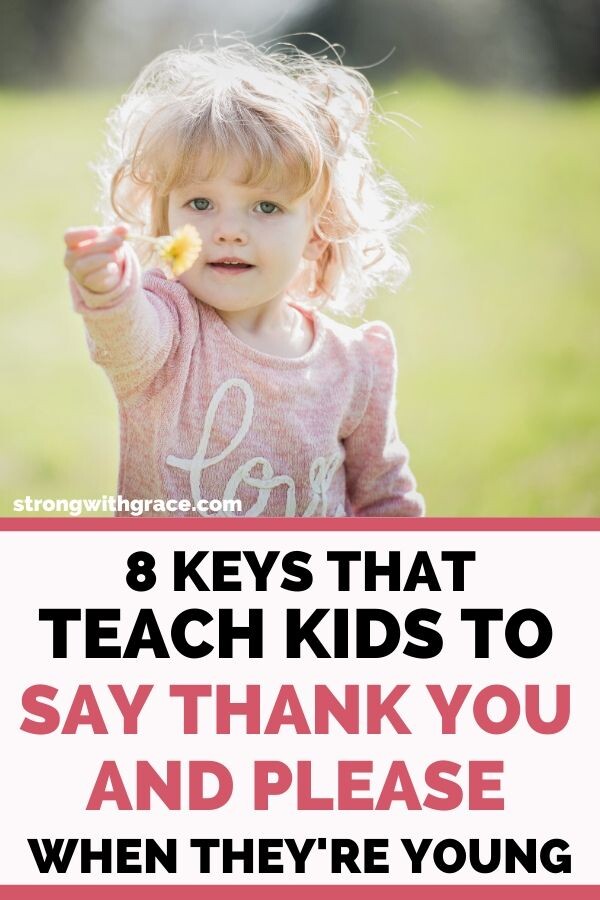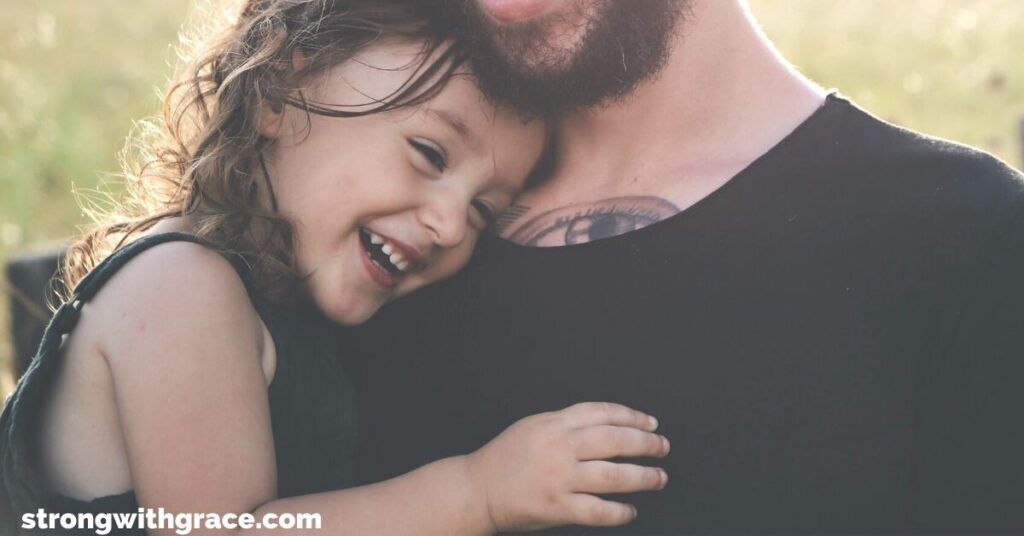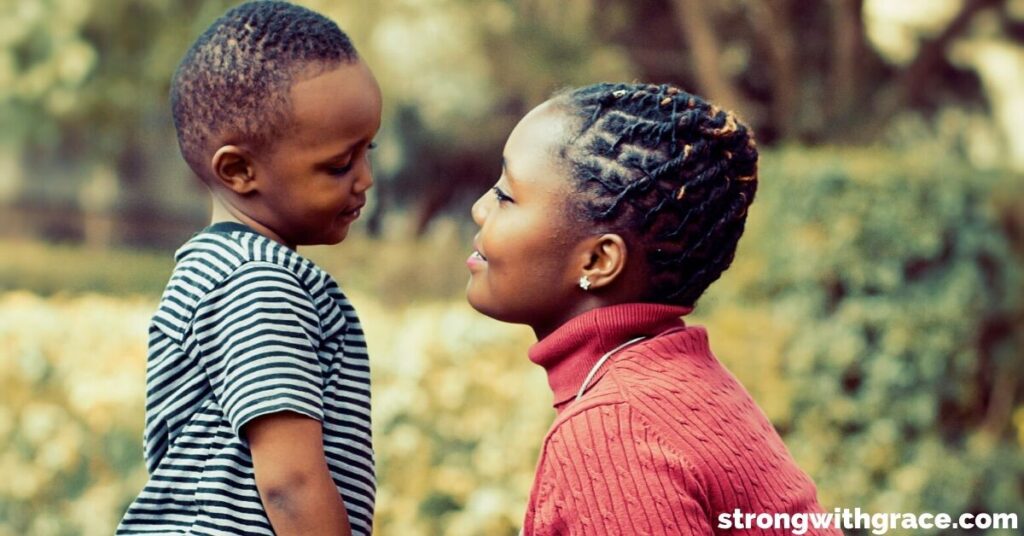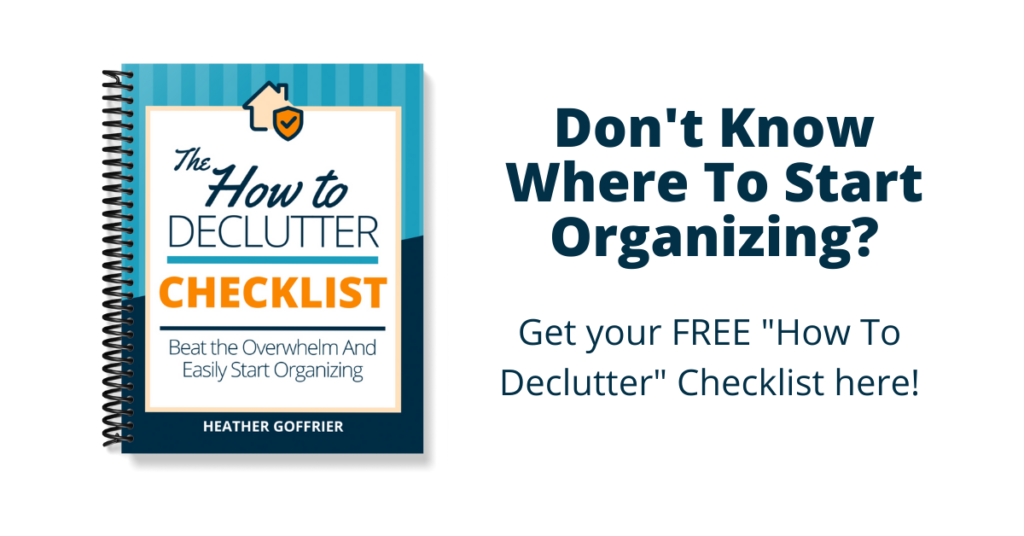How do you teach kids to say thank you, please, and to have good manners? Heather offers 8 keys that have helped her daughters to consistently be polite. Plus, get your free “How To Declutter” Checklist and get your kiddos in on controlling the clutter too! Click below to download:
We’ve gotten a lot of compliments about how polite our kids are.
We’ve also had plenty of moments where they were less than well-mannered… making demands, throwing tantrums. It’s real life over here.
But I do enjoy and appreciate the positive feedback I get from childcare workers and other parents that my kids say thank you and please and have concern and care for others.
It makes my mom heart happy, and not only because they’re doing the right thing. Partly that. But partly it’s nice to know that what I’m doing is actually working.
That repeating myself a kagillion times when I remind them, “say ‘more PLEASE'” is actually having some affect on them.
Phew.
Because motherhood is hard, and you don’t get a lot of feedback on much of it, at least for years down the road (that’s what I hear anyway!).

RELATED: 7 WORDS OF ENCOURAGEMENT FOR WOMEN ON HOW TO THRIVE AS A MOM
Table of Contents
8 Keys To Teach Kids To Say Thank You And Please When They’re Young
So how do you teach your kids to say please and thank you in a way that actually sticks? Here are 8 Keys we use or have used regularly with our three daughters.
And before we dive in, here’s a video of my youngest at 18 months saying “thank you.” (it’s pretty adorable, of course!)
1- Use Sign Language
We started teaching please with sign language. We only used the sign for “more” but always said “more please.” It seemed too complicated to use two signs, so we stuck with one.
It took a long time (a few months) of signing to them before any of the kids ever signed back. I was about to give up a few times but finally they caught on. Sign language came in SO handy, so don’t give up!
(other super helpful signs are “hungry,” “diaper,” “help,” and “all done.”)
We didn’t use the sign for thank you very much for some reason, but we always said it to them and had them say it. Which leads to the next step, Repetition.
We loved the website BabySignLanguage.com and others we found on Google. You can find a ton of quick videos that to look up signs in the moment. Here’s a video of the sign for “more.”
2- Repeat The Correct Words
You have to repeat yourself 100 million times (slight exaggeration) when teaching kids to say please and thank you. When they say MORE, we repeated “more PLEASE” when gave the next bite or item.
3- Model Phrases For Good Manners
As my kids age, we continue to do a lot of phrase modeling. If they say, “give me ball,” I’ll say, “Can I have the ball please?” and wait for them to repeat my phrase. When they do, I give them the object.
Of course, even for my very verbal 2 year old “Can I have the ball please?” still sounds more like “Can ball peez?” When you can see that your child is doing their best to say please, you can reward them.
Eventually you can require more specific phrasing. With my 6-year-old, if she calls out “More pizza please!” we say, “May I…” and then she remembers and reorders her words with “may” in front: “May I have some more pizza please?”
It’s also helpful to guide them on how to be polite at birthday parties and when they receive gifts. Kids don’t automatically think about thanking others, so modeling what to say is a huge help.
For example: Quietly telling a 3-year-old what to say to Uncle Matt when he gets them a set of whiffle golf clubs.
4- Have Patience With Slow Progress
If you find yourself getting upset at a child who doesn’t use please and thank you, try to remember that they are learning. I’m still reminding my almost-7-year-old to use her manners, so a two or three-year-old will not have it down yet.
It takes time.
If your child doesn’t say please or thank you, simply remind them by modeling the phrase you’d like them to use and then expecting them to repeat it.
Though they’re learning, that doesn’t mean they get the item they want without being polite. If they want a snack, you can certainly expect them to ask politely and not demand it.
Kids learn quickly by cause and effect. For example:
If I demand a snack, I don’t get one. If I am polite and say please, I might get one.
Of course, we don’t always say yes just because our adorable child used manners and it melted our hearts. It can be hard to say no, but kids also have to learn to deal with that disappointment.

RELATED: 5 STEPS ON HOW TO MOTIVATE KIDS WITH A POSITIVE REWARD SYSTEM
5- Reminding Of The Magic Word
When you think your child understands the concept of saying please (and can verbally express themselves), start giving them hints in addition to phrase modeling.
You are still being kind and gracious with your response but aren’t giving attention to their requests (or demands) until they choose to be polite. You can use hints such as:
- You’re missing the magic word…
- What’s the magic word again?
- I can’t hear you when you ask like that.
- How can you solve that problem? (when they say “I need some milk!” If they can’t think of how to solve it, we teach them these options: “you can ask for help politely or try to get it on your own”)
To teach Thank You, we repeat and remind them to say it anytime they forget: “What do you say?” We repeat that phrase constantly.

6- Don’t Make Food A Battleground
Eventually, you can withhold the item until they say please, but give them time to gradually learn with lots of reminders. Obviously don’t starve them if they don’t say it during dinner.
Kids learn cause and affect really quickly, and they can see the connection between you waiting to give them something until they say please.
RELATED: 6 MEAL PLANNING TIPS THAT WILL HELP YOUR KIDS EAT BETTER
If you have a strong-willed child (my oldest was fairly strong-willed when she was a toddler) you can be more of a stickler with toys and other items rather than with food. It’s better not to let eating be a fight and not to create ultimatums with taking bites.
For something extra like dessert, you could certainly require a please because they won’t miss any nutrients if they don’t have it.
7- Use Positive Reinforcement
It’s important to praise your children when they get it right. I think over-praising is helpful when they’re first learning. Get really excited and give them a big hug when they’re polite. Tell them, “Thank you for saying ‘please’! Good job!”
You can use a positive reward system like this one we use if your kids needs some extra motivation.
In the system, you give them a token (we use poker chips) when they do something above and beyond. You can also give a token to emphasize something you’re trying to teach, which in this case is saying “thank you” and “please.”
8- Be A Good Example
Kids learn so much from watching others, especially their parents.
In an article on Parents.com, Dr Klein states, “Parents of toddlers are under constant observation. During this critical developmental period, it’s important to model your best behavior.”
If you are teaching your kids to say Please and Thank You, but don’t use those phrases much yourself, it’s not going to stick for them either.
Demonstrate the politeness you want to see, and it will make a huge difference in what they pick up and start doing.
Along those lines, you DON’T have to be a perfect parent! Sometimes how we come back from our mistakes is the biggest lesson for our kids.
RELATED: 5 IMPORTANT HABITS YOU NEED TO BECOME MORE HIGHLY ORGANIZED AS A MOM
The Truth About Please And Thank You
The truth is, we aren’t teaching our kids good manners just so we get a lot of compliments about how polite they are.
And even though I like knowing my strategies are working, that’s not the reason I do it either.
We teach kids to say thank you and please because it teaches them to be grateful. It helps them have more care and concern for others in a day where children tend to be self-centered and entitled.
We instill manners in them because it helps them become the people we know they can be-– the loving, kind, thoughtful person with a unique identity and a lot to offer the world.
GRAB YOUR FREE “HOW TO DECLUTTER” CHECKLIST BELOW!


